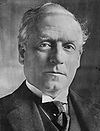
Herbert Henry Asquith, 1st Earl of Oxford and Asquith,, generally known as H. H. Asquith, was a British politician and statesman who served as Prime Minister of the United Kingdom from 1908 to 1916. He was the last Liberal Party prime minister to command a majority government, and the most recent Liberal to have served as Leader of the Opposition. He played a major role in the design and passage of major liberal legislation and a reduction of the power of the House of Lords. In August 1914, Asquith took Great Britain and the British Empire into the First World War. During 1915, his government was vigorously attacked for a shortage of munitions and the failure of the Gallipoli Campaign. He formed a coalition government with other parties but failed to satisfy critics, was forced to resign in December 1916 and never regained power.

George Nathaniel Curzon, 1st Marquess Curzon of Kedleston,, styled Lord Curzon of Kedleston between 1898 and 1911 and then Earl Curzon of Kedleston between 1911 and 1921, was a prominent British statesman, Conservative politician and writer who served as Viceroy of India from 1899 to 1905.

Edward Grey, 1st Viscount Grey of Fallodon,, better known as Sir Edward Grey, was a British statesman and Liberal Party politician who was the main force behind British foreign policy in the era of the First World War.

Richard Burdon Haldane, 1st Viscount Haldane, was a British lawyer and philosopher and an influential Liberal and later Labour politician. He was Secretary of State for War between 1905 and 1912 during which time the "Haldane Reforms" of the British Army were implemented. As an intellectual he was fascinated with German thought. That led to his role in seeking detente with Germany in 1912 in the Haldane Mission. The mission was a failure and tensions with Berlin forced London to work more closely with Paris.

Earl of Oxford and Asquith is a title in the Peerage of the United Kingdom. It was created in 1925 for the Liberal politician H. H. Asquith. He was Home Secretary from 1892 to 1895, Chancellor of the Exchequer from 1905 to 1908, Leader of the Liberal Party from 1908 to 1926 and Prime Minister of the United Kingdom from 1908 to 1916. Asquith was made Viscount Asquith, of Morley in the West Riding of the County of York, at the same time, also in the Peerage of the United Kingdom. This title is used as a courtesy title by the heir apparent to the earldom.
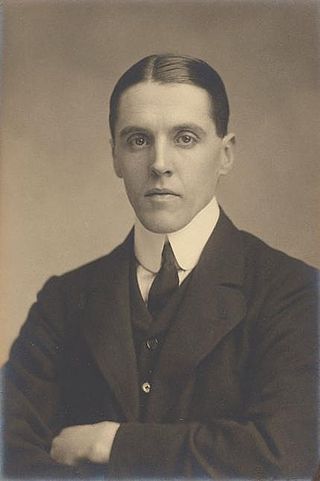
Frederick Edwin Smith, 1st Earl of Birkenhead, was a British Conservative politician and barrister who attained high office in the early 20th century, in particular as Lord High Chancellor of Great Britain. He was a skilled orator, noted for his staunch opposition to Irish nationalism, his wit, pugnacious views, and hard living and drinking. He is perhaps best remembered today as Winston Churchill's greatest personal and political friend until Birkenhead's death aged 58 from pneumonia caused by cirrhosis of the liver.

Herbert Louis Samuel, 1st Viscount Samuel, was a British Liberal politician who was the party leader from 1931 to 1935.

Robert Threshie Reid, 1st Earl Loreburn, was a British lawyer, judge and radical Liberal politician. He served as Lord High Chancellor of Great Britain between 1905 and 1912.
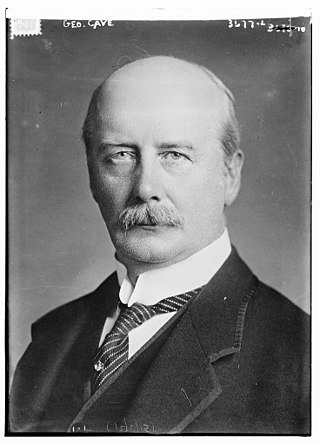
George Cave, 1st Viscount Cave, was a British lawyer and Conservative politician. He was Home Secretary under David Lloyd George from 1916 to 1919 and served as Lord Chancellor from 1922 to 1924 and again from 1924 to 1928.
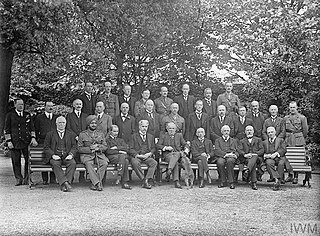
Liberal David Lloyd George formed a coalition government in the United Kingdom in December 1916, and was appointed Prime Minister of the United Kingdom by King George V. It replaced the earlier wartime coalition under H. H. Asquith, which had been held responsible for losses during the Great War. Those Liberals who continued to support Asquith served as the Official Opposition. The government continued in power after the end of the war in 1918, though Lloyd George was increasingly reliant on the Conservatives for support. After several scandals including allegations of the sale of honours, the Conservatives withdrew their support after a meeting at the Carlton Club in 1922, and Bonar Law formed a government.

Stanley Baldwin of the Conservative Party formed the second Baldwin ministry upon his reappointment as Prime Minister of the United Kingdom by King George V after the 1924 general election. His second ministry ended following the so-called "Flapper Election" of May 1929.

Stanley Owen Buckmaster, 1st Viscount Buckmaster, was a British lawyer and Liberal Party politician. He was a Member of Parliament (MP) for most of the years from 1906 to 1915, when he was elevated to the peerage and served as Lord Chancellor under H. H. Asquith from 1915 to 1916.

Cyril Asquith, Baron Asquith of Bishopstone, PC was an English barrister and judge who served as a Lord of Appeal in Ordinary from 1951 until his death three years later.

Dame Edith Sophy Lyttelton was a British novelist, playwright, World War I-era activist and spiritualist.
The Lord Rector of the University of Aberdeen is the students' representative and chairperson in the University Court of the University of Aberdeen. The position is rarely known by its full title and most often referred to simply as "Rector". The rector is elected by students of the university and serves a three-year term. Although the position has existed since 1495, it was only officially made the students' representative in 1860.
The Relugas Compact was the plot hatched in 1905 by British Liberal Party politicians H. H. Asquith, Sir Edward Grey, and R. B. Haldane to force the prospective prime minister, Sir Henry Campbell-Bannerman, to give up the leadership of the party in the House of Commons. The Compact is significant because it represents a new way of doing party political business at the highest level. In an era when aristocratic power was still taken for granted, the manoeuvring for the highest office in the land represented for the first time distinct political philosophies vying for control of one of the major parties. Learning from an association with Tories Salisbury and Balfour at Hatfield, the Liberal Imperialists stole a march on their rivals to take a step nearer modernisation. Moreover, they brought with them junior ministers such as Sidney Buxton and Henry Fowler, making it look like a take over from the Gladstonian Radicals, of whom the ageing Prime Minister was the last.
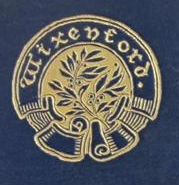
Wixenford School, also known as Wixenford Preparatory School and Wixenford-Eversley, was a private preparatory school for boys near Wokingham, founded in 1869. A feeder school for Eton, after it closed in 1934 its former buildings were taken over by the present-day Ludgrove School.
The 1926 North Cumberland by-election was held on 17 September 1926. The by-election was held due to the succession to the peerage of the incumbent Conservative MP, Donald Howard. It was won by the Conservative candidate Fergus Graham.

The Eldon Law Scholarship is a scholarship awarded to students from the University of Oxford who wish to study for the English Bar. Applicants must either have obtained a first class honours degree in the Final Honours School, or obtained a distinction on the BCL or MJur. It is a two-year scholarship presently funded at £9,000 a year.
